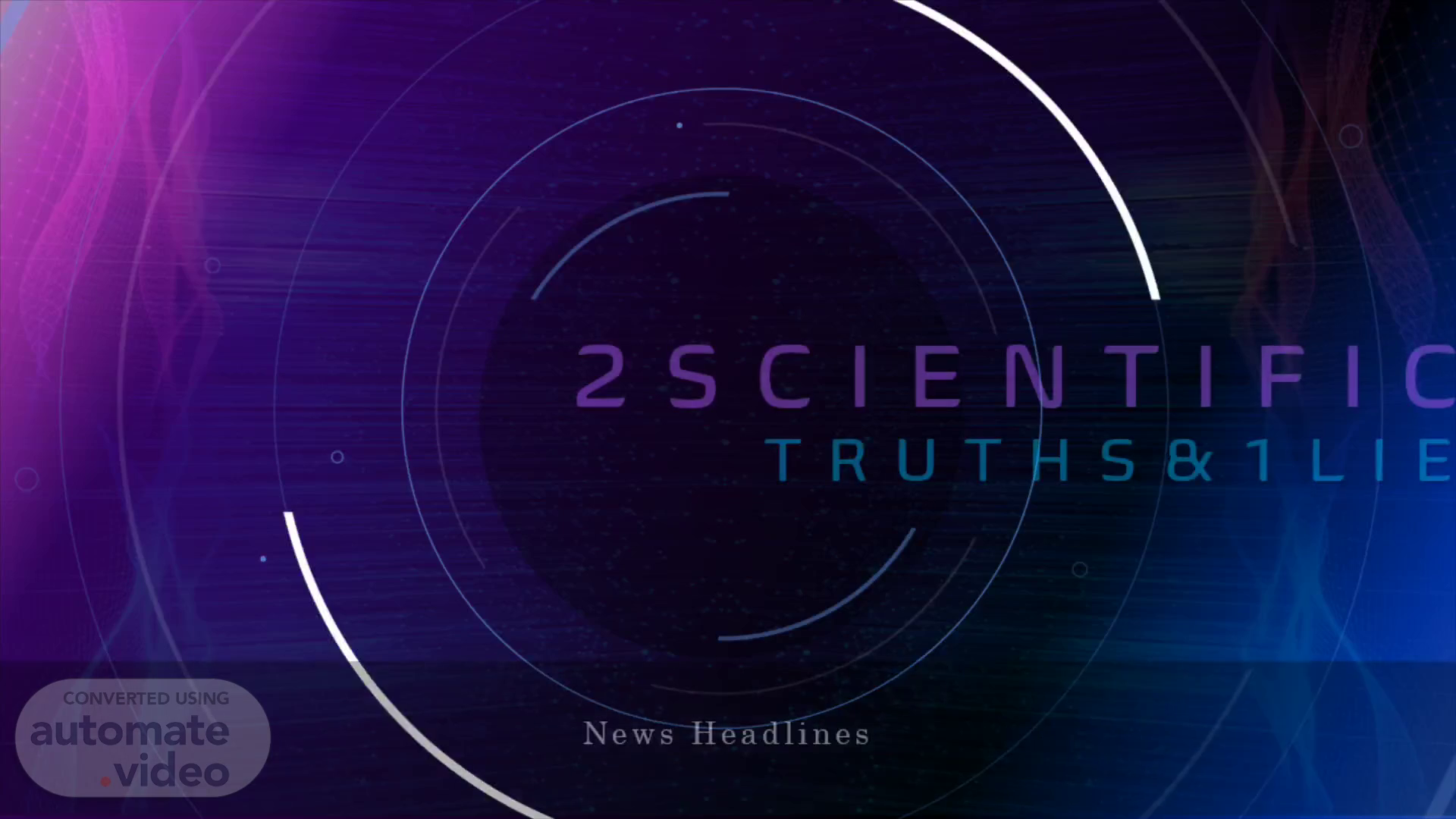Scene 1 (0s)
[Audio] Hello and welcome to 2 Scientific Truths and a Lie. I am Candace Jamison your narrator for this presentation..
Scene 2 (9s)
[Audio] During this presentation we will review recent news headlines and three summaries of each headline that will include 2 truths and 1 lie. At this point you must rely on your own common sense and limited knowledge of science to determine which summary is the truth and which one is a lie. Let's get started..
Scene 3 (30s)
[Audio] First, we have Headline 1, Scientists Discover Water on Mars. I'll allow you some time to read each summary and decide which one is the lie. I'll review the untruth momentarily. Which one did you guess? Well, if you chose the 3rd summary you are correct. No such research exist..
Scene 4 (56s)
[Audio] Next is headline 2, Breakthrough in Quantum Computing. Which summary below is the lie? All three seem believable right? But the first summary is incorrect, no such event has occurred, but I won't be surprised when it does. We have one more to go..
Scene 5 (1m 22s)
[Audio] Headline 3 is about Covid-19 clinical trials. Which one is the lie? Yes, the first summary is untrue. There are no clinical studies that prove such information..
Scene 6 (1m 47s)
[Audio] Critical thinking is paramount when evaluating science headlines, as it helps individuals discern the reliability and accuracy of the information presented. Here are key points highlighting the importance of critical thinking in this context, with an emphasis on credible sources and peer-reviewed research: Avoiding Misinformation: Critical thinking enables readers to distinguish between credible science reporting and sensationalized or misleading headlines. In an age of rampant misinformation, this skill is crucial for making informed decisions. Discerning Credibility: Critical thinkers assess the credibility of the sources behind the headlines. They consider the reputation and track record of news outlets and look for publications known for their commitment to accuracy and impartiality. Evaluating Scientific Consensus: Critical thinkers understand that a single study or headline may not represent the broader scientific consensus. They look for evidence of multiple studies, ideally peer-reviewed, that support or refute a claim to gauge its validity. Understanding Peer Review: Critical thinking includes an understanding of the peer-review process. Articles that undergo rigorous peer review are generally more reliable, as they have been evaluated by experts in the field for methodology, accuracy, and ethical standards. Scrutinizing Methodology: Critical thinkers examine the methodologies used in scientific studies. They assess whether the research methods are sound, appropriate for the research question, and have been conducted with rigor. Questioning Bias: Critical thinking involves questioning potential biases in research or reporting. Researchers may have conflicts of interest, and news outlets might have editorial biases that can influence the way information is presented. Seeking Multiple Perspectives: Critical thinkers do not rely solely on one source. They seek diverse perspectives from different experts, institutions, and publications to gain a more comprehensive understanding of the topic. Fact-Checking: Critical thinkers verify facts and claims made in headlines using reputable fact-checking organizations. They are cautious of headlines that lack verifiable evidence or rely on anonymous sources. Promoting Informed Decision-Making: Ultimately, critical thinking ensures that individuals make informed decisions based on credible and well-supported information. This is particularly important when science headlines impact public health, policy, or personal choices. Contributing to Scientific Literacy: By engaging in critical thinking when evaluating science headlines, individuals not only protect themselves from misinformation but also contribute to a more scientifically literate society. This supports evidence-based decision-making at both individual and societal levels..
Scene 7 (5m 12s)
[Audio] In summary, critical thinking is essential for evaluating science headlines because it empowers individuals to discern reliable information from potentially misleading or inaccurate sources. Emphasizing the importance of credible sources and peer-reviewed research enhances the quality of information people rely on, promoting better-informed choices and decisions..
Scene 8 (5m 37s)
Anderson, G. (2015, September 28). NASA Confirms Evidence That Liquid Water Flows on Today’s Mars. NASA. https://www.nasa.gov/press-release/nasa-confirms-evidence-that-liquid-water-flows-on-today-s-mars Tillman, N. T. (2018, August 17). Water on Mars: Exploration & Evidence. Space.com. https://www.space.com/17048-water-on-mars.html Chadwick, J. (2023, July 3). Did Google really achieve quantum supremacy in 2019? Daily Mail. https://www.dailymail.co.uk/sciencetech/article-12258353/Google-claims-quantum-computer-breaththrough.html Roush, W. (2020, February 26). The Google-IBM “quantum supremacy” feud. MIT Technology Review. https://www.technologyreview.com/2020/02/26/905777/google-ibm-quantum-supremacy-computing-feud/ Chirico, F., Teixeira da Silva, J. A., Tsigaris, P., & Sharun, K. (2022, January 1). Safety & effectiveness of COVID-19 vaccines: A narrative review. NIH National Library of Medicine. https://www.ncbi.nlm.nih.gov/pmc/articles/PMC9552389/ Lipsitch, M., Krammer, F., Regev-Yochay, G., Lustig, Y., & Balicer, R. D. (2021, January 7). SARS-CoV-2 breakthrough infections in vaccinated individuals: Measurement, causes and impact. NIH National Library of Medicine. https://www.ncbi.nlm.nih.gov/pmc/articles/PMC8649989/.
Scene 9 (6m 44s)
Thank you.
